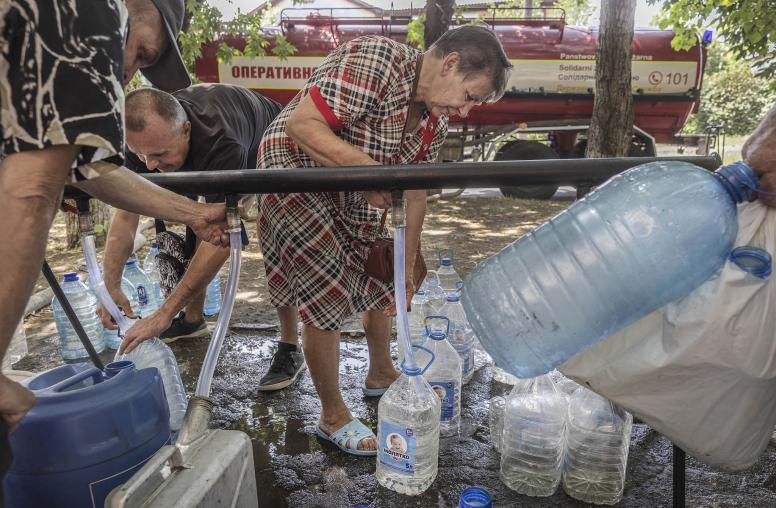The massive truck bomb attacks that killed more than 300 people in Mogadishu last weekend are a tragic reminder of the scale of suffering caused by terrorism in Somalia and across the developing world. Yet the solidarity that emerged in the aftermath—as ordinary Somalis, the fledging central government, and the international community worked together to provide relief—suggests a more hopeful path for Somalia. The international community and Somalia should build on this unity by solidifying financing to establish Somali security forces that will be capable of protecting ordinary citizens.

That an attack on this scale was even possible in the streets of Somalia’s busy capital, where the newly elected federal government and the 22,000-strong African Union peacekeeping mission are headquartered, illustrates the challenges confronting the country as it struggles to turn the page after decades of conflict. The government said this was the deadliest single terrorist incident in Somalia’s history.
Details concerning the Oct. 14 attacks are still emerging. Early reports suggest the extremist group al-Shabab perpetrated the attack, although the group hasn’t claimed responsibility. Divisions within the army may have contributed to recent military setbacks against al-Shabab, allowing the group to control more territory and infiltrate the truck bombs into Mogadishu. The group also may have taken advantage of political tensions between the central government and the six federal states comprising Somalia.
The capacity of the government to manage the response also was limited. Hospitals grappled with a surge of severely wounded patients. The central government, which lost at least one official in the attack and has few experts in improvised explosives, struggled to investigate the attack.
Thousands March Against Al-Shabab
Yet an unusual degree of solidarity has emerged in the aftermath. Authorities set up a task force and emergency response center to coordinate disaster management, while Somalia’s international partners rushed in medical assistance. Ordinary Somalis used internet technology to organize search-and-rescue efforts, relief distributions, blood donations, the identification of missing persons, and fundraising campaigns. On Oct. 18, thousands of Somalis demonstrated in the capital, united against al-Shabab. The tense relationship between the central government and Somaliland also seemed to ease at least temporarily as the latter publicly condemned the attacks.
Such momentum is exactly what is needed to re-energize peacebuilding and defeat al-Shabab, which is more isolated as result of backlash to its vicious attacks. Somalia and its international partners have agreed on ambitious plans for a new national army and federal and state police that ultimately will step in to provide security instead of the decade-old African Union mission. The challenge now is to secure the funding.
Public Financing for Security
National leaders also should leverage the new solidarity to increase public revenues, including by agreeing to divvy up tax collection and spending authority. In parallel, the government could work with the private sector, particularly the successful telecommunications industry, to devise a formal tax scheme and regulation. The business community is understandably reluctant until it sees evidence that taxes will be put to good use, particularly in maintaining basic security. One option would be to peg the private sector’s commitment to tax reform to preliminary benchmarks for establishing legitimate security forces.
Somalia’s ability to provide security and other basic services also is hamstrung by the country’s debt, which accumulated long before the devastating war began over two decades ago, but still restricts borrowing even at this critical stage. The United States and other donors should either significantly expedite the write-down of Somalia’s debt, or make an exception to allow new grants starting this calendar year.
Now is the time to act, while Somali citizens’ trust in their new government is on the rise.



